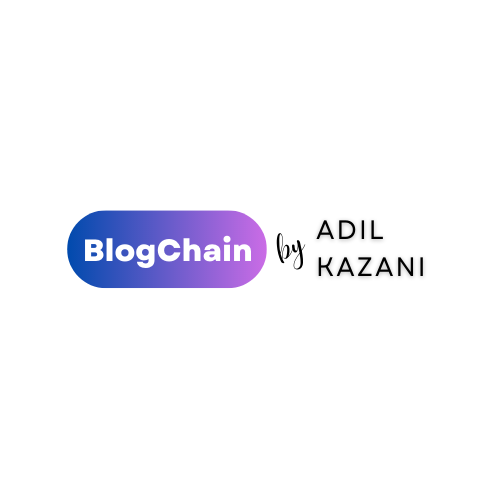
Good Morning! 
Delivering interesting content every single week on Web3, Security, Crypto, NFTs, Privacy & AI.
It's FREE, Takes less than 5-minutes to read, and you are guaranteed to learn something.
Subscribe to get valuable News, Useful Resources and Insights every week to your Inbox!
Introduction
Bitcoin Halving, often dubbed as “The Halvening,” entails reducing the number of mined Bitcoins by 50%. This process is systematically set to occur roughly every 4 years as designed.
In traditional terms, "mining" involves physically extracting minerals like iron from the Earth. However, in the context of Bitcoin, mining refers to digitally extracting BTC by solving intricate math problems using specialized computers operated by miners.
You might ask: How much and how frequently is BTC mined and added to the circulating supply?
When Bitcoin was created by Satoshi Nakamoto in 2008, miners initially received 50 BTC per mined block (from January 2009 until the subsequent halving).
The algorithm stipulated that each block would be mined approximately every 10 minutes, resulting in the addition of 50 new BTC to the circulating supply every 10 minutes initially.
Regarding the timing of halving, it occurs not precisely every 4 years but every 210,000 blocks, approximately translating to 4 years, as depicted below:

Currently, miners receive 6.25 BTC compared to the initial 50. By around April/May 2024, the mining rate will reduce further to 3.125 BTC.
Key Questions Explored:
Why is this halving mechanism encoded on the Bitcoin blockchain?
How does each halving impact the value/price of Bitcoin?
What motivates miners to persist in mining despite a 50% reduction in profits every 4 years?
Reasons for Halving - Controlling Supply
The current circulating supply stands at 19,537,956 BTC.

However, the actual circulation might be lower due to Bitcoin holders losing access to their BTC by misplacing their private keys or passing away without transferring their wallet seed phrase.
A study by Chainalysis in June 2020 suggested that up to 20% of BTC in circulation might be permanently lost.
Bitcoin's supply is fixed at a maximum of 21 million BTC, making it an immutable code-governed entity. This fixed supply contrasts sharply with fiat currencies, which fluctuate based on decisions made by national central banks through processes like 'quantitative easing,' essentially inflating the currency.
Bitcoin's fundamental value proposition rests on its limited supply and scarcity, which positions it as a potential store of value akin to gold. Altering this hard cap could jeopardize Bitcoin's desirability as an asset.
Impacts of Halving - Scarcity and Price
Scarcity influences price; however, for prices to rise, there must be a solid value proposition driving demand. Bitcoin's scarcity, cemented in its fixed supply, combined with its potential as a new store of value comparable to gold, has attracted institutional investors and major funds like Blackrock.

The Role of Miners
Miners earn rewards by creating new blocks and validating transactions. The reduction in mining rewards with each halving makes mining less lucrative over time.
Currently, miners receive 6.25 BTC ($229k USD), a reasonable incentive considering Bitcoin's growing demand and price.
Miners tend to sell their mined BTC to cover operational costs. However, as mining rewards decrease, miners may delay selling, anticipating potential gains from future Bitcoin price hikes. This reduction in selling pressure leads to a surge in Bitcoin's price.
Historical Price Trends
Previous halving cycles witnessed significant price volatility before and after the event, resulting in bullish patterns. The decrease in supply issuance, coupled with increasing Bitcoin popularity, anticipates higher demand and prices.

Prices typically surge significantly a few months after each halving, a trend observed in the day-of and subsequent 6- and 12-month prices of BTC during the last 3 halvings.

It’s important to note that past performance doesn’t guarantee future results, as well as how there are factors, other than the 4-year halving cycle, e.g. macroeconomic conditions, that could strongly influence Bitcoin’s price.
Future Implications
The final halving is expected around 2140. Yet, the total number of Bitcoins will slightly fall short of 21 million due to the rounding down of rewards to fractions of Satoshis, the smallest unit in the Bitcoin network.
Post the 2024 halving, 28 more halvings are projected until the final reward is mined. The asset's stability is anticipated post-mining, possibly acting as a global store of value or a new reserve currency.
It is also hypothesized that once the final Bitcoins are mined, the asset price will become more stable, and potentially act as a global store of value (or the new reserve currency) in the future.
Conclusion
Bitcoin halving, occurring approximately every four years, involves a 50% reduction in block rewards. This deliberate scarcity mechanism embedded in Bitcoin's protocol serves as a bulwark against inflation.
The significance of halving lies in its impact on Bitcoin's supply dynamics. With a capped supply of 21 million BTC, halving ensures fewer new Bitcoins enter circulation, mirroring the scarcity of precious metals like gold. This transparent monetary policy instills trust in Bitcoin investors, offering a hedge against fiat currency devaluation.
Amidst these halving cycles, the underlying proposition remains clear: a progressively scarcer asset backed by decentralized principles, poised to redefine the concept of money and reshape global finance.
If you're enjoying today's newsletter, why not share it with your friends? They might find it just as informative and entertaining as you do.
Sharing is caring, and by spreading the word about this newsletter, you're helping to support ME and ensure that more great content gets produced in the future. Plus, you'll get to have even more conversations with your friends about the interesting topics covered in each edition.
There are three ways to show me that you enjoyed reading this article:
Share this post with your friends
Subscribe to my newsletter
Collect this post for FREE on Zora Network (only 100 mints available)
I hope this was helpful!
Thank you for reading!
Let’s bust some more in next article. 





